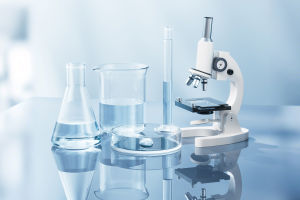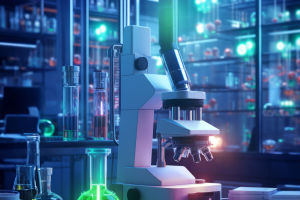Attraction is something we all experience, whether it's romantic love, admiration for a friend, or a connection with someone who shares our passions.
But have you ever wondered what's happening inside our bodies when we feel this magnetic pull toward another person?
We tend to think of attraction as a purely emotional or psychological phenomenon, but in reality, it's deeply rooted in biochemistry. Our brains and bodies are filled with complex chemical reactions that play a significant role in how we experience attraction. This article dives into the biochemistry of love—explaining why we feel attracted to others, and how hormones and chemicals shape these feelings.
The Role of Hormones in Attraction
Our bodies are constantly flooded with various hormones, some of which are crucial in creating and intensifying feelings of attraction. Let's explore a few of the key hormones involved in the process.
1. Dopamine: Often referred to as the "feel-good" hormone, dopamine plays a major role in the feelings of pleasure and reward we experience when we are attracted to someone. When we see someone we like or feel a strong connection with, our brains release dopamine, giving us that rush of excitement and happiness. This hormone is also linked to the feelings of euphoria often associated with the early stages of a romantic relationship.
2. Oxytocin: Known as the "bonding hormone," oxytocin is crucial in building trust and emotional connections. It's released when we hug, kiss, or even just spend time with someone we care about. Oxytocin plays a big part in the deep emotional connections we form with people, contributing to feelings of attachment and affection. It's especially important in long-term relationships and is thought to help maintain that bond over time.
3. Serotonin: This hormone helps regulate mood and emotional stability. In the context of attraction, serotonin is thought to contribute to feelings of happiness and contentment when we're around someone we like. Low serotonin levels, however, have been linked to obsessive thinking—sometimes explaining why we may fixate on someone we're attracted to.
4. Adrenaline: When we first feel attracted to someone, we often experience physical symptoms like a racing heart or butterflies in our stomach. This is due to adrenaline, also known as the "fight or flight" hormone. Adrenaline spikes when we encounter someone we find intriguing, causing these physical sensations that are often associated with the early stages of romantic attraction.
The Chemical Mix of Love
Attraction isn't just about individual hormones; it's also about how they interact with one another to create a perfect chemical Mix. When we meet someone who catches our interest, our bodies respond with an intense burst of hormones, each one contributing to the powerful emotions we experience.
One of the most fascinating aspects of attraction is how our brain combines these chemicals to create the feeling of infatuation or love. In the early stages of attraction, we may feel euphoric and overly focused on the object of our affection.
As time passes, the levels of certain hormones, such as dopamine, may fluctuate, but the presence of oxytocin helps to build a deeper, more lasting connection. This transition from infatuation to love is a natural process, influenced by the body's biochemistry.
How Do Pheromones Play a Role?
In addition to the hormones we release internally, we also communicate attraction through pheromones, which are chemical signals released by our bodies to convey information to others. Pheromones play a role in romantic attraction, signaling our genetic compatibility with a potential partner. These invisible chemical signals are detected subconsciously, influencing how attracted we feel to someone without us even realizing it.
Though the science of pheromones is still being explored, research suggests that they are a key factor in initial attraction, particularly in situations where we may be unaware of the subtle cues we are picking up from others. Essentially, pheromones act as nature's way of helping us find suitable partners.
The Science Behind Platonic Attraction
Attraction isn't just romantic; platonic attraction also has a biochemical basis. Dopamine and serotonin, triggered by deep connections with friends or colleagues, promote joy and satisfaction. Oxytocin fosters trust and empathy, essential for close friendships. Though less intense than romantic love, platonic bonds involve similar chemical reactions that enhance emotional closeness.
The Impact of Stress on Attraction
Not all of the biochemistry behind attraction is positive. Stress can have a profound effect on how we feel toward others. When we experience stress, the body releases cortisol, which can interfere with our ability to bond with others. High levels of cortisol can suppress the effects of dopamine and serotonin, making us feel disconnected or less inclined to form meaningful connections.
However, moderate levels of stress can sometimes have the opposite effect—think of the "honeymoon phase" of a relationship when everything feels exciting and intense. This is because stress can temporarily boost the release of adrenaline, creating heightened emotions and feelings of attraction. The key is balance: too much stress can hinder attraction, while the right amount can amplify it.
Conclusion: The Complex Chemistry of Love
Attraction is not just a magical feeling—it's rooted in complex biological processes that are driven by hormones, chemicals, and even subtle signals from our bodies. Whether it's the rush of dopamine when we meet someone new or the lasting bond created by oxytocin, our bodies are constantly working behind the scenes to shape how we experience attraction and love.
While we may not be fully aware of the intricate biochemistry happening inside us, it's fascinating to think about how these chemicals influence our relationships, both romantic and platonic. The next time you feel that spark of attraction, remember—it's not just about emotions; it's science at work!


